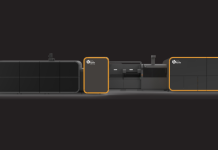According to Norm Chait, senior director, OOH Practice Lead for Quotient Technology, out-of-home advertising (OOH) has evolved significantly in recent years and has become a cost-effective solution for reaching consumers both nationally and locally. OOH and more specifically, digital out-of-home, is providing brands with the confidence and data to support their media plans.
OOH was once limited to billboards, subway posters and other static signage that limited results, made it difficult to measure and accurately target a specific audience.
This may have worked for big-budget movies or giant fast-food chains with locations around every corner, but it did little to satisfy the promotional needs of evolving businesses. Consumer brands have always needed a more powerful tool to amplify their products, and now OOH has caught up to their needs.
OOH has evolved significantly in recent years and has become a cost-effective solution for reaching consumers on both a national and a local scale. This evolution was no doubt further influenced by the global pandemic, significant weather occurrences and ongoing supply chain kinks that have turned our world upside down. However, the change began long before hand. With arguably just as much flexibility and fluidity as other digital marketing channels, OOH and more specifically, digital out-of-home, is providing brands with the confidence and data to support their media plans.
Like most forms of advertising, OOH has gone digital, providing brands with the ability to better target consumers with relevant messages and accurately measure results. Digital out-of-home can be deployed programmatically to reach audiences at contextually relevant moments, with dynamic ad placement driven by real-time data.
Weather conditions and the time of day can be set as automatic triggers for ads, as well as the proximity to desired locations. This allows brands to customise for local markets while achieving a national scale and, when combined with other tactics such as social media, promotions and any other audience-based channel, OOH effectively becomes a true omnichannel vehicle.
With the right technology partner, brands can use DOOH to successfully promote products even if they are not equally available everywhere. For example, if a brand is launching a new line of frozen pizzas – first in select markets, then nationally – the brand could use DOOH to approach each market accordingly.
One may require a promotion indicating that the pizzas are available now while another may need to highlight that the new line is coming soon. Technology makes it possible to quickly adjust based on different areas, DMAs, zip codes or even audiences so that overall messages resonate at a local level. A planning process that once took weeks can now take minutes and results can be measured with different metrics such as attributable sales and foot traffic.
Target more accurately, respond in real time
The audience here is critical. While OOH may have once been widely used by entities with large budgets, such as automotive or entertainment, brands now have far more access to high performing ad space as well as flexibility and control. DOOH leverages advanced audience targeting to allow brands to reach certain people with specific behaviors or habits instead of solely targeting based on streets and corners.
That said, traditional OOH is still very popular – but there is much more fluidity to match traditional and DOOH placements for maximum impact. Marketers can use programmatic buying to complement existing DOOH plans by extending traditional buys or streamlining unique creative treatments.
One of the best parts of DOOH is that it can be executed very quickly. A brand might have thousands of zip codes in mind with the goal of applying Creative A in one market, Creative B in another and so on. There may be different versions of the campaign that need to reach different DMAs, sharing different messages depending on the market. This could take a team weeks to deploy with direct buys. The back and forth with vendors and proposals could bog down the entire campaign or force the brand to simplify the strategy. Programmatic technology streamlines the process, allowing brands to be nimble and even react to changes in real time.
2022 is the year for out-of-home
Ongoing technological advancements are empowering brands to do more with their out-of-home campaigns. They can better target specific markets and more accurately measure the results to determine the campaign’s effectiveness.
Most significantly, DOOH has now become a cost-effective way to achieve a national scale while providing the flexibility to customise at the local level while also responding to last-minute changes. These are just a few of the benefits of DOOH and some of the many reasons why 2022 will be the year out-of-home shines.
This article appears in Digital Signage Today.















